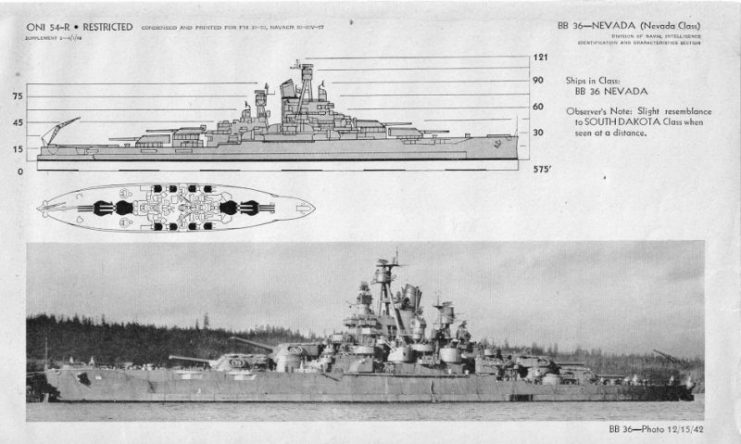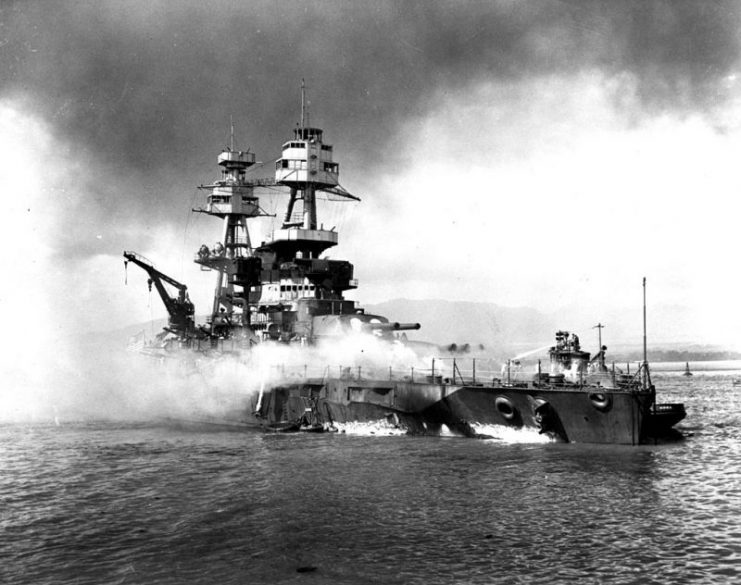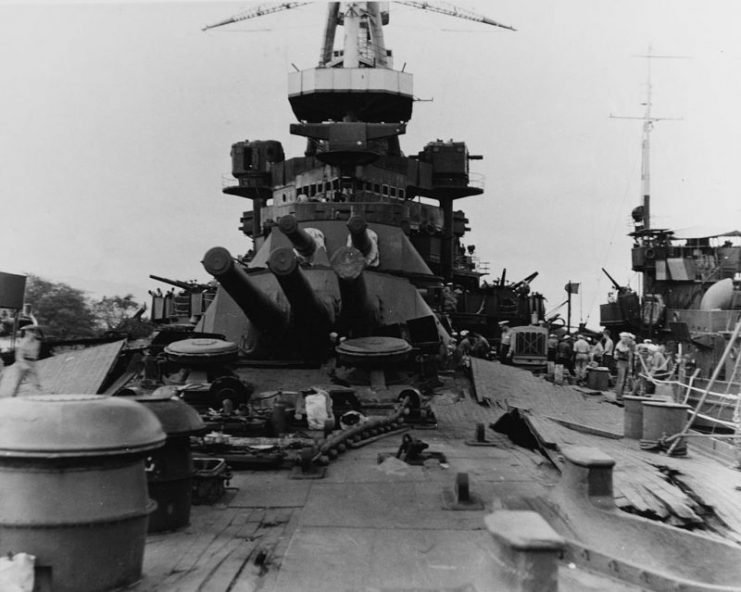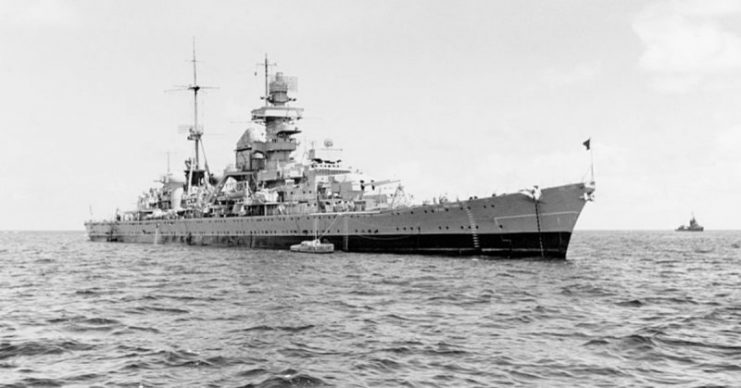From her conception in 1911 to her survival at Pearl Harbor and use as a target for atomic testing, the battleship Nevada had a remarkable career. She served all around the world in times of war and peace, but it was her remarkable durability that strikes many readers.
The construction of Nevada was authorized in a period of rising tensions and the rapid introduction of new technologies. Not long after construction on Nevada began, that tension in Europe would lead to World War I.


On Nevada though, three turrets gave the ship a decent mix of firepower, weight, and speed. This development combined with the use of oil instead of coal for fuel represented a leap in dreadnought technology at the time.
The “all or nothing” armor came from a new military philosophy regarding potential threats. The increasing range and size of weapons often meant that battles took place at longer ranges. So designers maximized armor in the most likely areas to be targeted, while other areas of the ship had little to no armor.
This allowed the overall tonnage of the ship to remain low, which improved the ship’s speed. The design became standard around much of the world at the time.

The Nevada didn’t see much overseas service in World War I due to fuel oil shortages in Great Britain. Toward the end of the war, it protected convoys out of Bantry Bay in Ireland.
After the war it served in many diplomatic missions and goodwill tours, and it was upgraded during those interwar years with tripod masts, an engine upgrade from the stricken North Dakota, and an increase in the caliber and number of its various guns.

The Nevada sustained heavy damage, and would have suffered the same fate as the Arizona except for the fact that the shells in the main magazine were being exchanged for new and it was mostly empty at the time. The relatively thin armor on the deck made it particularly susceptible to bombing runs and the Nevada ended up running aground, suffering a total of 60 killed and 109 injured during the attack.

In June 1944, the Nevada unloaded a furious barrage in support of the D-Day invasion. Its sailors received a great deal of praise for their exceptional accuracy, and were thankful that in the 27 times their ship was straddled by the fire from shore batteries it was never hit.

After the war Nevada was deemed too old to continue in the fleet and was assigned as a target at the Bikini Atoll for atomic testing. The ship was painted bright orange and sat near the atoll like a neon sentry.

Nevada suffered heavy damage and was incredibly radioactive, but remained afloat and was towed back to Pearl Harbor for decontamination and other tests. It was later decommissioned and sunk as a gunnery practice target.
Throughout its career Nevada became a durable ship for the US Navy. It survived the devastation of Pearl Harbor, living to help pummel the Axis Powers into submission.
Even when its final assignment was supposed to be getting blown up by an atomic bomb, the ship was too stout to die. Its entire career is a testament to the inspiring awe of battleships and their seamen.




I can understand your fascination, these things were big, powerful,
ReplyDeleteand could project a ton of whoop-ass. I visited the USS Iowa in
San Pedro and I was impressed! I really would have loved to see
it in WWII trim brimminng with anti-aircraft guns.
Hey Unknown;
DeleteYeah I am fascinated, I and my son did see the USS Alabama in Mobile and that ship was kitted out in its WWII livery.
It was a true heavyweight in more ways than one!
ReplyDeleteHey Old NFO;
DeleteWould have been cool as a museum ship.
She should have led the Fleet into Tokyo Bay.
ReplyDelete